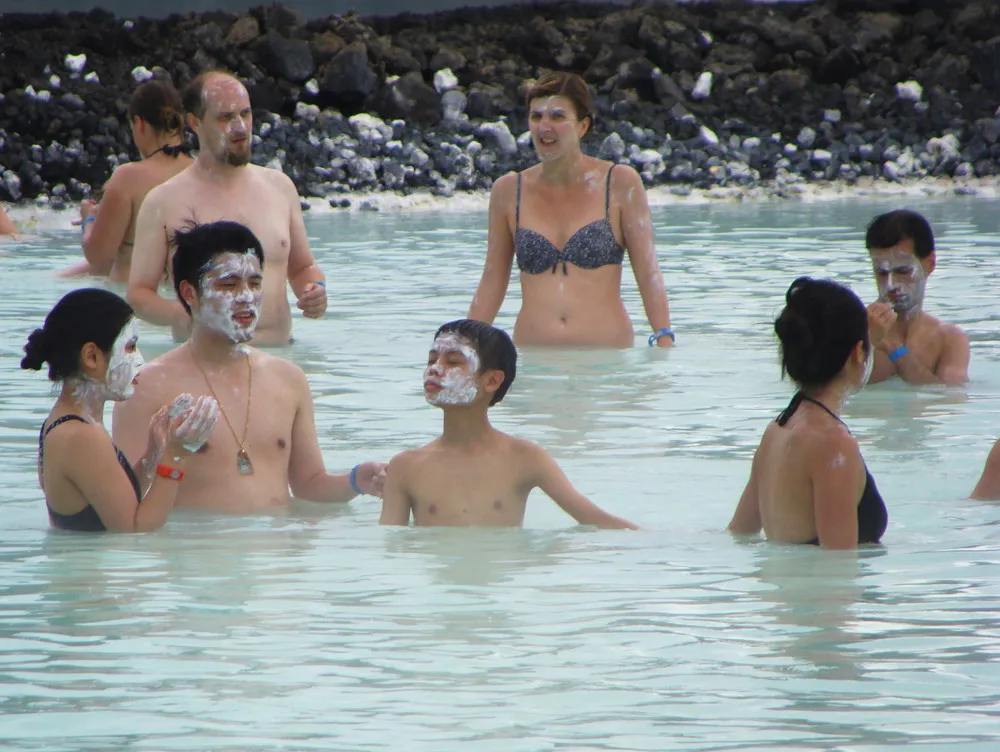|
The Blue Lagoon geothermal spa is one of the most visited attractions in Iceland. The spa is located in a lava field in Grindavík on the Reykjanes Peninsula, southwestern Iceland. Bláa lónið is situated approximately 13 km (8 miles) from the Keflavík International Airport and 39 km (24 miles) from the capital city of Reykjavík. That is roughly a 20 minute drive from the airport and a 40 minute drive from Reykjavík.
The warm waters are rich in minerals like silica and sulphur and bathing in the Blue Lagoon is reputed to help some people suffering from skin diseases such as psoriasis. The water temperature in the bathing and swimming area of the lagoon averages 37–39 °C (98–102 °F). The Blue Lagoon also operates a research and development facility to help find cures for other skin ailments using the mineral-rich water.
The lagoon is a man-made lagoon which is fed by the water output of the nearby geothermal power plant Svartsengi and is renewed every two days. Superheated water is vented from the ground near a lava flow and used to run turbines that generate electricity. After going through the turbines, the steam and hot water passes through a heat exchanger to provide heat for a municipal water heating system. Then the water is fed into the lagoon for recreational and medicinal users to bathe in.
Iceland has a strict code of hygiene and guests are required to shower before and after bathing.
The Blue Lagoon was used as the pit stop for the first leg of The Amazing Race 6. The Blue Lagoon was used for the thermal spa scenes in the filming of Hostel: Part II. It was also shown in the Incubus documentary Look Alive, when the band visited Iceland, as well as in the of Britain's Next Top Model which used as photoshoot location.
The Blue Lagoon is situated close to the world's first renewable methanol plant, which uses Carbon Recycling International's carbon dioxide to methanol fuel process.
The lovely thermal waters of Iceland's understandably famous Blue Lagoon. The geothermal power plant visible in the back supplies much of the power to Reykjavik, and of course the hot, rejuvinating waters of the Blue Lagoon itself.
Wikipedia
|

